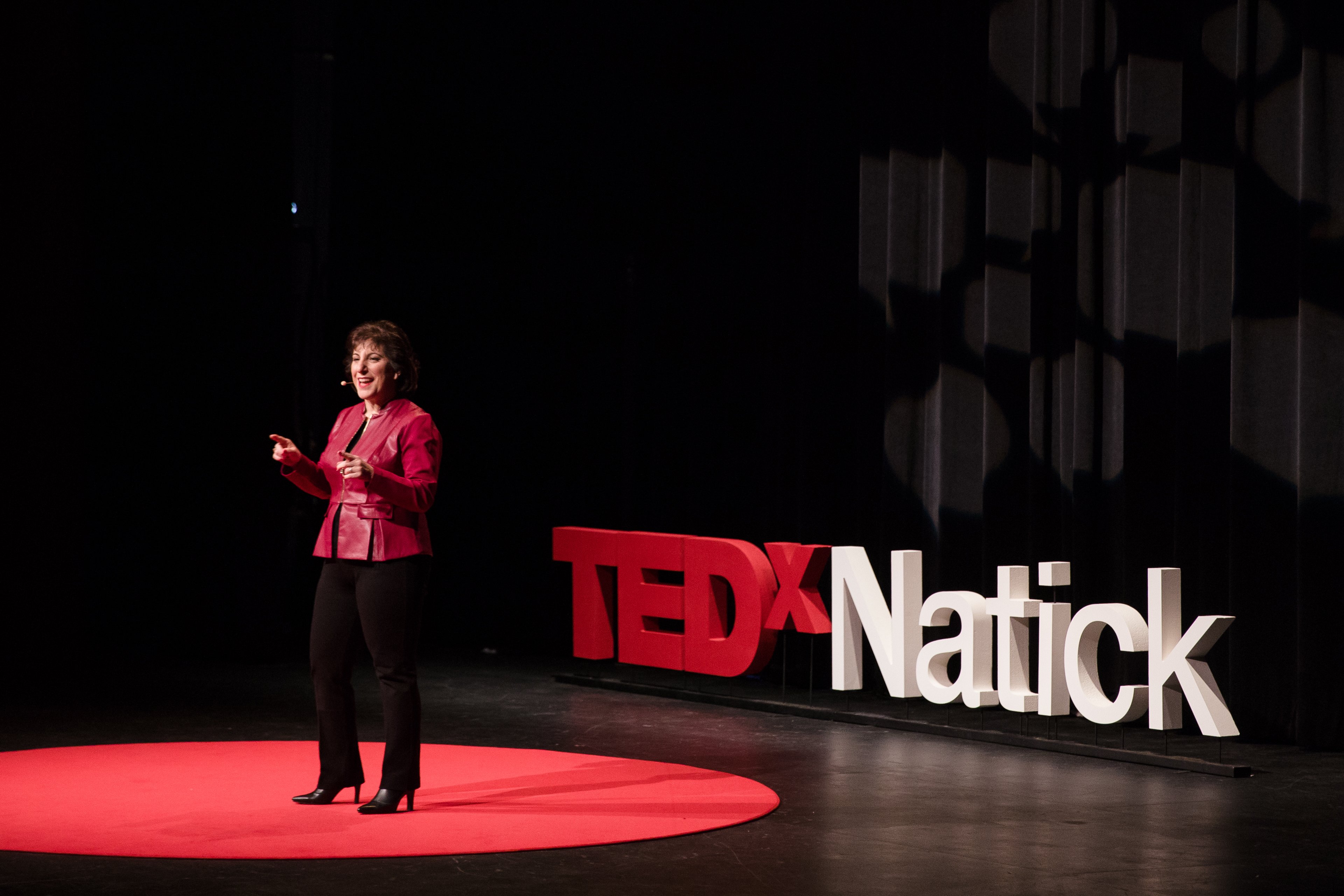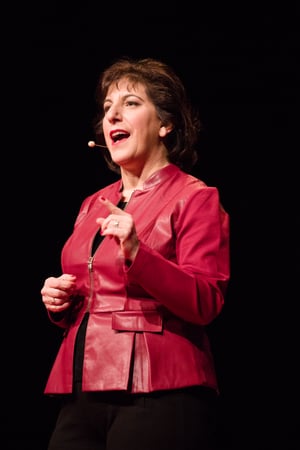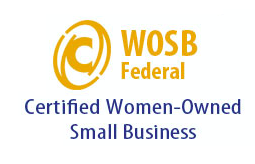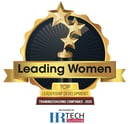Today's blog post comes from our friend and Leading Women alumna Victoria Waterman at Girls Inc. of Worcester. Be sure to watch her TEDxNatick talk and share it.
Read ON!

Photo Credit: TEDxNatick | Leah LaRiccia Photography
It started when I reached out to Susan Coluntuono to learn more about her research on confidence and how it fit into “The Missing 33%®”. As we knew from our work with leaders at every level, the lack of confidence was a significant contributor to holding women back in the workforce. As the former president of Leading Women Massachusetts, I have seen how this impacts women spanning all ages, socio-economic backgrounds, and industries. Paying it forward and preparing girls to get ahead of potential barriers when they enter the workforce has become my personal mission.
And Susan replied, “Sounds like a TED Talk to me.”
I quickly learned that to be accepted to deliver a TED Talk, being a good speaker and topic expert was important, but not enough. I needed to present my idea in a way that has never been heard and make a compelling case as to why I am the most qualified person to be giving the talk. Suffice it to say, this is no small order but it resulted in my exploration to drill down and uncover anecdotal and research-based data to determine the “last best chance” to reach girls and reasons why.
 We know that there are two major reasons why Americans believe that women are under-represented in leadership positions in business and politics. Over 40% believe there are: 1) higher standards for women; and 2) lack of readiness by companies to hire women for top positions.i How is that after decades of research and getting women to “lean in,” women in senior roles in the US has increased 1% in the past 10 years – just one.ii At the current rate of change, it will take until 2059 for women to reach pay parity with men, 2124 for black women, and 2248 for Hispanic women.iii
We know that there are two major reasons why Americans believe that women are under-represented in leadership positions in business and politics. Over 40% believe there are: 1) higher standards for women; and 2) lack of readiness by companies to hire women for top positions.i How is that after decades of research and getting women to “lean in,” women in senior roles in the US has increased 1% in the past 10 years – just one.ii At the current rate of change, it will take until 2059 for women to reach pay parity with men, 2124 for black women, and 2248 for Hispanic women.iii
But what if we are overlooking a third reason? In my view, we focus rightly on encouraging women to climb the ladder of success… and forget those women started as girls. We need to get GIRLS TO the bottom rung of that ladder AND make sure it is strong enough to hold them as they climb. If not, then we are shortening the ladder and they don’t get as high as they should. Or they get stuck partway up because the first rung wasn’t strong enough to hold them. Or the ladder isn’t there to begin with.
That steep climb begins with 10 year old girls.
We know that generally speaking, 10 year old girls are confident, assertive, and feel they can accomplish almost anything. Nancy W. Davies, founder of Orchard House School says, “If you want to see what she will be like as an adult, see what she is like as a 10 year old.” Ms. Davies states, “Developmentally, they are at the pinnacle of the childhood continuum of healthy individuals.” They tend to be happy, engaged, confident, and enthusiastic.iv
Imagine if we could send her “best 10 year old self” into those tumultuous middle school years when so many changes are happening to her between 10 and 12.
- In those 2 years between 10 and 12, girls are feeling the pressure of adolescence from every direction. They are experiencing significant physical changes, and for many a big growth spurt. Their friends and peers have taken on a stronger role as influencers and who opinions matter most. Many parents often say “who are you and what have you done with my daughter?”
- Research used for the recently published, “The Confidence Code For Girls” by Katty Kay & Claire Shipman, reveals that “There’s virtually no difference in confidence between boys and girls until they hit age 12. At 14, when girls are hitting their low, boys’ confidence is still 27 percent higher.
- Between 10 and 12, girls believe the myth that they’re not as good in science and math, even though their grades are just as strong as their male classmates. However, it’s not only about expanding STEM, the impact goes way deeper for girls. There’s no secret in the direct correlation of women who stay in unhealthy relationships because they can’t afford to get out. Let’s expose our girls to the growing demand of high-paying jobs so they can own their futures and say no to unhealthy relationships.
During my career focused on women’s and girls’ advancement, I have found these effects to be long lasting and prevent females from achieving the success they seek.
We can do better. We are doing better.
Let me tell you what’s happening close to my heart, in your backyard, and across the United States and Canada to change the trajectory of our future female leaders. Girls Inc. is a national organization and expert on girls that provides research-based classes to give girls WHAT they need WHEN they need it. The staff are trained to inspire girls to be strong, smart, and bold. Volunteers from companies ranging from entrepreneurs to Fortune 500’s open doors to mentorships girls may not have had access to otherwise.
Locally 54 high school graduates and members from Girls Inc. of Worcester collectively received over 230 college acceptances (including 5 Ivy Leagues), over $3.6 million in scholarships (including 15 full scholarships), 50% were first in their families to go to college, and 70% selected STEM related majors.
Not that we should diminish or stop empowering women, but which a return on investment that strong, we need to start intentionally getting girls to that ladder!
The change we seek needs to start now, and it starts with each of us. There are a number of ways of doing that but in my experience, here a plan that’s easy to remember. It’s called G.I.R.L.S:
G is for Grit. And girls need it! Being gritty means learning from mistakes and being resilient.
I is for Introduce. Connect girls with pro-girl organizations that teach girls to be healthy, educated, and independent.
R is for Role Model. Take a hard look at how biases may be affecting your attitudes, actions, and language and be a positive role model.
L is to Lift her as You Climb. Extend a hand and bring her up the ladder with you.
S is for Smart ASK. Inspired by the Courageous Ask, encourage and teach girls how to ask for what they need or want.
Imagine… if girls stepped on the first rung of that ladder with confidence in asking for what she wants, maybe we won’t have to wait at least 40 years to see parity in pay and leadership.
Join me and let’s step up for G.I.R.L.S!
References:
iPew Research Center, http://www.pewsocialtrends.org/2015/01/14/chapter-3-obstacles-to-female-leadership/
iihttps://www.catalyst.org/champions/
iiiInstitute for Women’s Policy Research. (2016). Pay Equity & Discrimination. Washington DC; Author. Retrieved from https:/iwpr.org/issue/employment-education-economic-change/pay-equity-discrimination/
ivWhy 5th?, 2003, Nancy W. Davies https://www.orchardhouse.org/sites/default/files/Why%205th.pdf






